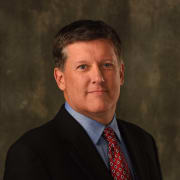Harmony in Golf Remains Out of Reach As Divide Widens Among Players

More Weekly Read: Inside LIV Golf's Qualifier | Will Zalatoris's Comeback
NASSAU, Bahamas — There have always been perks like the Hero World Challenge for golf's elite players. Apparently just not enough of them.
That is, among other things, why the game finds itself in the situation it is today, with a tenuous agreement meant to bring peace between the PGA Tour, DP World Tour and Public Investment Fund of Saudi Arabia, but all kinds of chatter suggesting there is nothing close to such harmony.
In recent days and weeks, PGA Tour veterans Chris Stroud and Lanto Griffin expressed their displeasure with the way the PGA Tour treats the rank-and-file, a category in which you would put these players who, frankly, do not sell tickets.

And yet, the divide in the game is directly linked to the star players believing they were not looked after well enough, considering they are the needle movers who bring eyeballs to television and streaming and corporate sponsorship dollars to tournament purses.
Offseason events such as Tiger Woods’s Hero World Challenge—where only 20 players compete and everyone is guaranteed a six-figure payday—were not enough. (Winner Scottie Scheffler received $1 million for low-key work in the Bahamas; last place was guaranteed $120,000.)
For years, Phil Mickelson wondered why the Tour subsidized opposite field events, staged so many tournaments and didn’t direct more funds to fewer tournaments with strong fields and larger purses. In other words, cater to the marquee players.
If you want to know why the forerunner to LIV Golf—the Premier Golf League—first gained traction, Mickelson summed it up in a nutshell and has been pushing that narrative since signing with league last year. The idea behind the PGL and now LIV is to have as many of the top players competing against each other week to week, for big money purses and guaranteed pay. (Never mind the idea that LIV Golf does not have anywhere close an abundance of the top players in the game.)
And if that is bothersome, look at the new structure of the PGA Tour that will see eight signature events in 2024 with $20 million purses (the Sentry will be $15 million), five of which will have no 36-hole cut—which means guaranteed pay and FedEx Cup ranking points. Those tournaments include every player who finished among the top 50 in the FedEx Cup standings.
The basis for those events was the Delaware meeting that occurred during the 2022 BMW Championship that helped hatch a series of required “designated events" in 2023. Rory McIlroy, a key player along with Woods at the meeting, acknowledged earlier this year that the original intent of those tournaments was to see even fewer players enjoy the benefits—more like 50 instead of the 70 to 80 that will take part.
So the Tour pushed back to include more players. But it still has set up a system that will see two distinctly different levels of events, a big difference from the way the Tour operated over the years, in which it treated the stars—as well as the rank and file—pretty much the same.
"I’ve been frustrated with what the Tour’s done for years, since I was on the PAC (Player Advisory Council)," Stroud told GolfChannel.com. “The Tour doesn’t care about you if you’re not in the top 30 and I learned that quickly that I needed to take care of myself.
"The Tour has built this bad culture. I love (commissioner Jay Monahan), but the Tour has never tried to give back to the players, we’ve never had a voice. So, Jay has had a free hand to do whatever he wants."
Stroud, 41, who has entered the LIV Golf Promotions event this week in Abu Dhabi, has seen a good bit of pushback on his views, given that golf offers the ultimate "play better" scenario. And yet his comments are also ironic when you consider that seemingly forever, the Tour has done all it could to look out for the little guy—to the chagrin of the big guys who drive interest.
Griffin’s issue is with the disparity in FedEx points that will go to players in signature events (700 to the winner) and regular events (500).
“Give them all the money they want but when you start giving them the points, I’ve got a problem with that,” Griffin, 35, said in a recent Golfweek interview. “Do you know what fifth in an elevated (signature) event next year makes in FedEx Cup points? 300. It’s 110 for a normal event. So I go play Torrey Pines with 156 players and a cut and Rory goes to L.A. the next week in a 78-players, no-cut field, and he gets nearly three times the points for the same finish.
"How is one going to compete with that? The guys that are making the decision are obviously going to look out for themselves. That’s where there is a disconnect for guys in my position, the normal guys. So having someone who will listen and not be only concerned about the top 10."
Ah, unintended consequences. To combat LIV Golf, the Tour came up with this plan that will greatly enrich those who qualify for the big events. The FedEx Cup bonus pool is going to $100 million in 2004, up from $75 million, with the winner getting $25 million. The Players Championship will have a $25 million purse.
There is plenty of money to be earned, even if providing it via sponsors and local tournaments has been a challenge.
When all of this was in the early discussion stages in 2022, Adam Scott made a solid point, a veteran who has seen it all.
"I think the hardest thing for the Tour is it’s trying to be all things to all people," he said. "It’s a very, very hard thing to do. It’s impossible to please everybody. They certainly can’t have everybody happy, but you’ve got to please someone. And I think that’s kind of what Phil might have been trying to say. He’s been on Tour a long time and maybe he felt that strongly about it. With all the things going on, I think it’s fair to say that the balance of the pro game was a bit out of shape."
So you’ve got the star players believing that their side was not accounted for properly. And with changes made to accommodate them, you’ve now got the rank-and-file players crying foul as well.
Meanwhile, the LIV Golf threat remains strong. Despite the framework agreement and the Dec. 31 deadline, LIV seems poised to snatch players away from the PGA Tour for its 2024 season.
For there to be peace, there needs to be a deal but it remains very unclear whether that will happen.
Jordan Spieth, a player director on the PGA Tour Policy Board, said when asked if he wanted a deal with the PIF: “There would have to be some kind of like non-negotiables that I think the players of the PGA Tour should have and I'm not sure that that could be met with PIF. And maybe it could, and I'm not sure."
That sounded ominous, as did Woods’s own description over his frustration over "governance" issues with the PGA Tour and his acknowledgment that considerable movement is taking place behind the scenes and that a move by a player to LIV would not be surprising.
Whether any kind of a truce or peace can be achieved remains very much in doubt.
All of which should make for an interesting discussion this week when Monahan and Yasir Al-Rumayyan, the governor of the PIF, are scheduled to meet.
